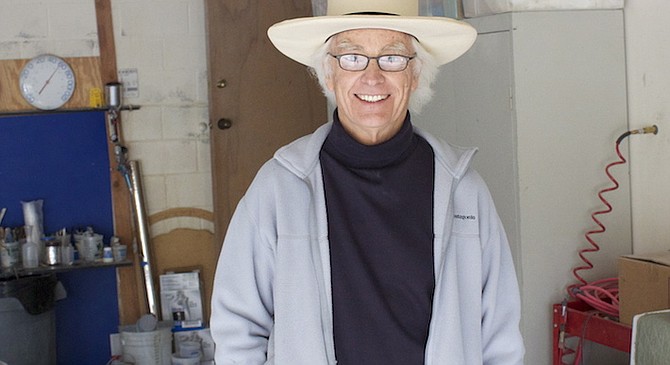 Facebook
Facebook
 X
X
 Instagram
Instagram
 TikTok
TikTok
 Youtube
Youtube

Carl Ekstrom began surfing in 1948, four years after his brother, Woody, had mastered the sport at Windansea, from where the family was nearly forced to move after their rent was raised from $12 to $17 a month. Carl and Woody’s dad tightened the family belt, worked a few more hours, while the boys surfed at Windansea.
Beginning in 1943, Woody had ranked among the first to surf Windansea and was one of its top riders on the heavy wooden planks he sometimes made himself. When then-seven-year-old Carl began, he nearly drowned in the powerful shorebreak. Carl persisted and eventually earned a place next to his brother as a top surfer in the region.
Along with another local surfer named Al Nelson, Carl launched Nelson/Ekstrom Surfboards, a brand that became popular locally. By 1964, Carl had gone on his own and along with his first wife, Ann, started Ekstrom Surfboards on Playa De La Plata in La Jolla Shores. Carl invented an asymmetrical surfboard. “I realized that I liked one board better for going right and the other for going left.” In 1964 that he began to combine both boards into one.
When Ekstrom closed his surf shop and quit making surfboards in the late ‘70s, he and his design were forgotten. In 1999 Ekstrom returned to the shaping room and built a few boards for friends, among them one of California’s premier surfers, Richard Kenvin. Kenvin spread the word about the asymmetry. Next to catch on to the Ekstrom boards was up-and-coming star, Ryan Burch. The boards were refined and other shapers began to take notice and adapt asymmetry to their boards.
Ekstrom is not what is known as a production shaper, but makes his surfboards one at a time in his garage-converted surf shop in the midst of a eucalyptus grove in Rancho Santa Fe. Currently he is working on finless surfboards with experimental rails. Kenvin and Burch are his test pilots.


Carl Ekstrom began surfing in 1948, four years after his brother, Woody, had mastered the sport at Windansea, from where the family was nearly forced to move after their rent was raised from $12 to $17 a month. Carl and Woody’s dad tightened the family belt, worked a few more hours, while the boys surfed at Windansea.
Beginning in 1943, Woody had ranked among the first to surf Windansea and was one of its top riders on the heavy wooden planks he sometimes made himself. When then-seven-year-old Carl began, he nearly drowned in the powerful shorebreak. Carl persisted and eventually earned a place next to his brother as a top surfer in the region.
Along with another local surfer named Al Nelson, Carl launched Nelson/Ekstrom Surfboards, a brand that became popular locally. By 1964, Carl had gone on his own and along with his first wife, Ann, started Ekstrom Surfboards on Playa De La Plata in La Jolla Shores. Carl invented an asymmetrical surfboard. “I realized that I liked one board better for going right and the other for going left.” In 1964 that he began to combine both boards into one.
When Ekstrom closed his surf shop and quit making surfboards in the late ‘70s, he and his design were forgotten. In 1999 Ekstrom returned to the shaping room and built a few boards for friends, among them one of California’s premier surfers, Richard Kenvin. Kenvin spread the word about the asymmetry. Next to catch on to the Ekstrom boards was up-and-coming star, Ryan Burch. The boards were refined and other shapers began to take notice and adapt asymmetry to their boards.
Ekstrom is not what is known as a production shaper, but makes his surfboards one at a time in his garage-converted surf shop in the midst of a eucalyptus grove in Rancho Santa Fe. Currently he is working on finless surfboards with experimental rails. Kenvin and Burch are his test pilots.
Comments